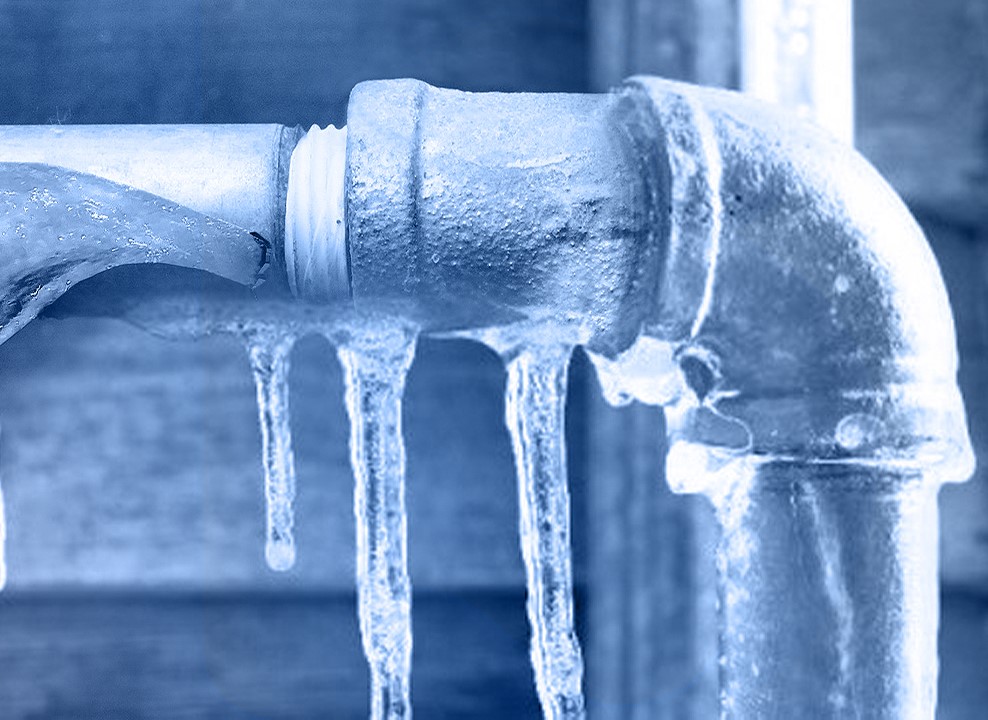Protecting Pipes from Cold Weather Issues: Key Strategies
Protecting Pipes from Cold Weather Issues: Key Strategies
Blog Article
We have found this article pertaining to Winter Plumbing Precautions: Preventing Frozen Pipes directly below on the web and figured it made sense to share it with you over here.

Cold weather can wreak havoc on your plumbing, especially by freezing pipelines. Below's just how to stop it from happening and what to do if it does.
Intro
As temperature levels decline, the threat of frozen pipelines rises, potentially causing pricey repairs and water damage. Recognizing exactly how to stop icy pipes is vital for house owners in cold environments.
Comprehending Icy Pipes
What creates pipes to ice up?
Pipes ice up when exposed to temperature levels below 32 ° F (0 ° C) for prolonged durations. As water inside the pipes freezes, it broadens, taxing the pipe wall surfaces and potentially triggering them to break.
Dangers and problems
Frozen pipelines can lead to water disruptions, residential property damages, and pricey repairs. Burst pipelines can flooding homes and cause extensive structural damages.
Signs of Frozen Pipeline
Identifying frozen pipes early can stop them from bursting.
How to determine icy pipelines
Try to find reduced water circulation from taps, uncommon smells or sounds from pipelines, and noticeable frost on revealed pipelines.
Avoidance Tips
Insulating vulnerable pipelines
Cover pipes in insulation sleeves or utilize heat tape to shield them from freezing temperature levels. Focus on pipelines in unheated or external locations of the home.
Heating techniques
Maintain interior rooms properly warmed, particularly areas with pipes. Open closet doors to allow cozy air to circulate around pipelines under sinks.
Safeguarding Exterior Plumbing
Garden pipes and exterior faucets
Disconnect and drain pipes yard tubes before winter months. Install frost-proof spigots or cover exterior faucets with shielded caps.
What to Do If Your Pipelines Freeze
Immediate actions to take
If you believe frozen pipes, keep faucets available to eliminate stress as the ice thaws. Use a hairdryer or towels soaked in hot water to thaw pipelines gradually.
Long-Term Solutions
Architectural modifications
Take into consideration rerouting pipes away from outside walls or unheated areas. Include added insulation to attics, basements, and crawl spaces.
Upgrading insulation
Buy top quality insulation for pipes, attic rooms, and wall surfaces. Correct insulation aids keep constant temperatures and reduces the danger of frozen pipes.
Verdict
Stopping icy pipelines requires positive actions and quick reactions. By comprehending the causes, indications, and preventive measures, home owners can safeguard their pipes during winter.
5 Ways to Prevent Frozen Pipes
Drain Outdoor Faucets and Disconnect Hoses
First, close the shut-off valve that controls the flow of water in the pipe to your outdoor faucet. Then, head outside to disconnect and drain your hose and open the outdoor faucet to allow the water to completely drain out of the line. Turn off the faucet when done. Finally, head back to the shut-off valve and drain the remaining water inside the pipe into a bucket or container. Additionally, if you have a home irrigation system, you should consider hiring an expert to clear the system of water each year.
Insulate Pipes
One of the best and most cost-effective methods for preventing frozen water pipes is to wrap your pipes with insulation. This is especially important for areas in your home that aren’t exposed to heat, such as an attic. We suggest using foam sleeves, which can typically be found at your local hardware store.
Keep Heat Running at 65
Your pipes are located inside your walls, and the temperature there is much colder than the rest of the house. To prevent your pipes from freezing, The Insurance Information Institute suggests that you keep your home heated to at least 65 degrees, even when traveling. You may want to invest in smart devices that can keep an eye on the temperature in your home while you’re away.
Leave Water Dripping
Moving water — even a small trickle — can prevent ice from forming inside your pipes. When freezing temps are imminent, start a drip of water from all faucets that serve exposed pipes. Leaving a few faucets running will also help relieve pressure inside the pipes and help prevent a rupture if the water inside freezes.
Open Cupboard Doors
Warm your kitchen and bathroom pipes by opening cupboards and vanities. You should also leave your interior doors ajar to help warm air circulate evenly throughout your home.

We had been made aware of that editorial on Winter Plumbing Precautions: Preventing Frozen Pipes from a pal on a different domain. Loved our content? Please share it. Help somebody else discover it. Thanks so much for taking the time to read it.
Free Estimate Report this page